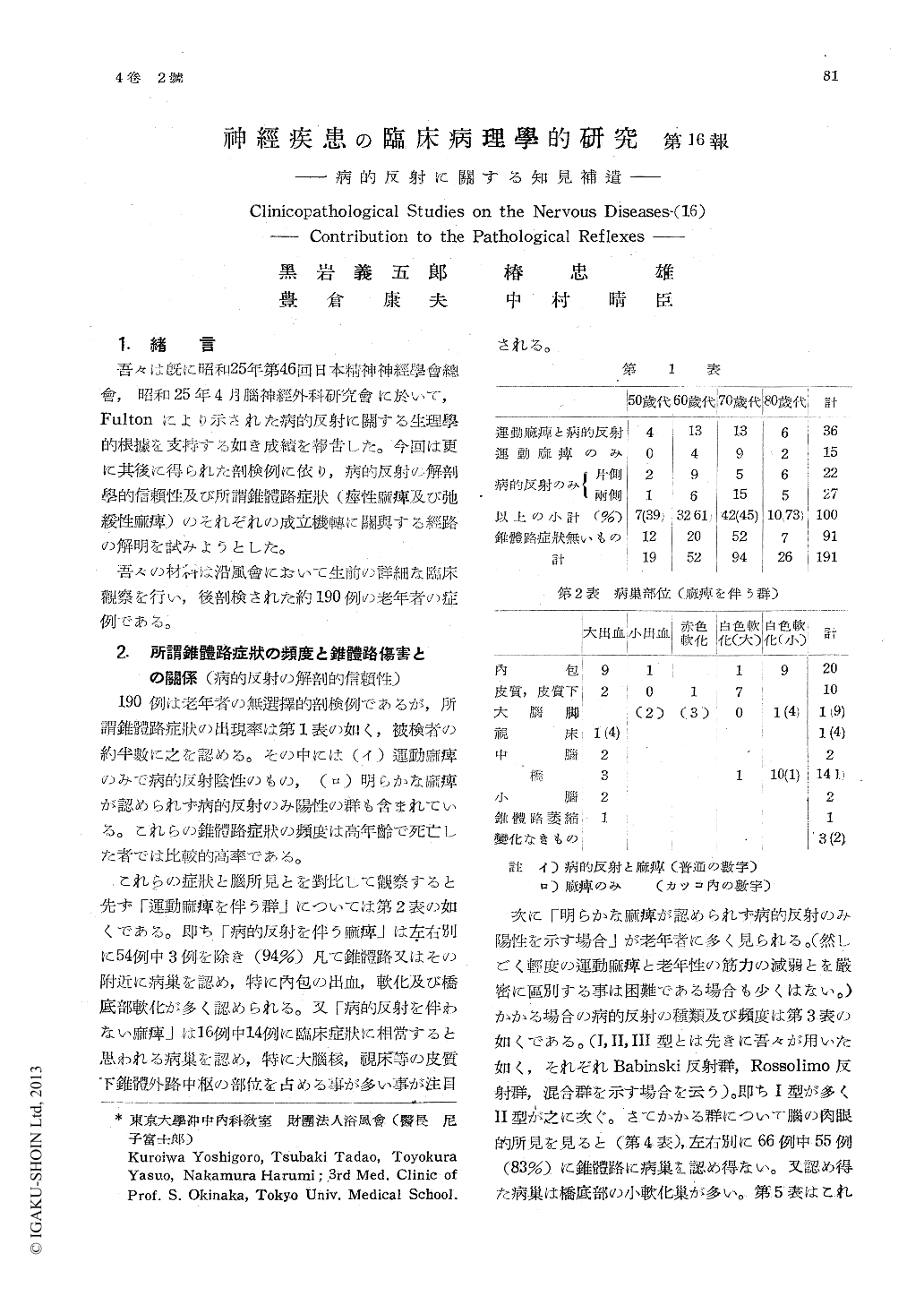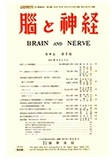Japanese
English
- 有料閲覧
- Abstract 文献概要
- 1ページ目 Look Inside
1.緒言
吾々は既に昭和25年第46回日本精神神經學會總會,昭和25年4月腦神經外科研究會に於いて,Fultonにょり示された病的反射に關する生理學的根據を支持する如き成績を報告した。今回は更に其後に得られた剖検例に依り,病的反射の解剖學的信頼性及び所謂錐體路症状(痙性麻痺及び弛緩性麻痺)のそれぞれの成立機轉に關與する經路の解明を試みようとした。
吾々の材料は沿風會において生前の詳細な臨床觀察を行い,後剖検された約190例の老年者の症例である。
We have been studying on the pathological reflexes (pyramidal signs) in the view of the clinicopathological basis, and we supported clinically the Fulton's theory on the lesion of the upper motor neurons.
Some important results obtained thereafter are reported in this paper
Materal: 190 cases of the aged, on which. we examined clinically and performed the postmortem examination.
Results
1) Motor paralysis with the pathological refl-exes occurred following to the lesion in the pyr-amidal tract. Lesions in the subcortical ganglion often showed hemiparesis without any patho- logical reflexes. The group in which were observed only the pathological reflexes without any motor paralysis, revealed generally no change in the pyramidal pathway, or very small lesions in the pons or else, so we assume that these signs might result from the fun-ctional change.
2) The large lesions in the striatal nuclei showed neither pathological reflexes nor spa-sticity, though there are intimate efferent connections from the premotor cortex to the striatal nuclei.
3) The lesions which localized in the basis of the pons showed the pathological reflexes which belong to the syndroms of the motor and premotor cortex, and some spasticity, which was not so marked as seen in those of the lesions in the internal capsule.
4) Cases, which revealed the severe degen-eration of the medullary pyramid, showed the flaccid paralysis and the pathological reflexes which belong to the Babinski's group. The lesion that existed in the reticular formiation with the involvement of the pyramidal tract, showed flaccid paralysis.
5) According to the Wagley's opinion the involvement of the lateral pyramidal tract alone shows no spasticity.
A case of the amyotrophic laleral sclerosis, which found typical spastic paralysis, revealed not only severe degeneration of the lateral pyramidal tract but also that of the anterior and anterolateral funiculus, these findings su-ggest the involvement of the reticulospinal tract is responsible for the spasticity.
6) Pathways, the lesions of which show flaccid paralysis with the Babinski's sign, ori-ginate from the motor cortex and descend to the spinal cord along the pyramidal tract.
Pathways, the lesions of which show spasti-city, originate from the premotor cortex and then descend in the mesial part of the cere-bral peduncle, through the basis of the pons, and perhaps partially in the tegmentum of the pons, then at the medulla oblongata they depart from the pyramidal tract and descend in the reticular formation, and further descend into the spinal cord (perhaps anterolateral funiculi)

Copyright © 1952, Igaku-Shoin Ltd. All rights reserved.


